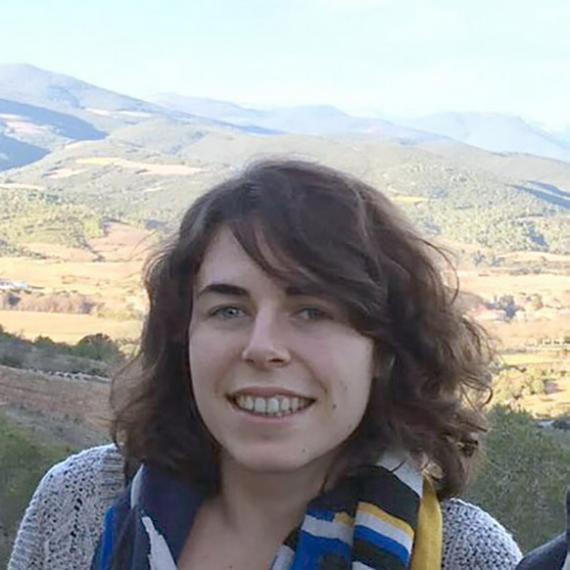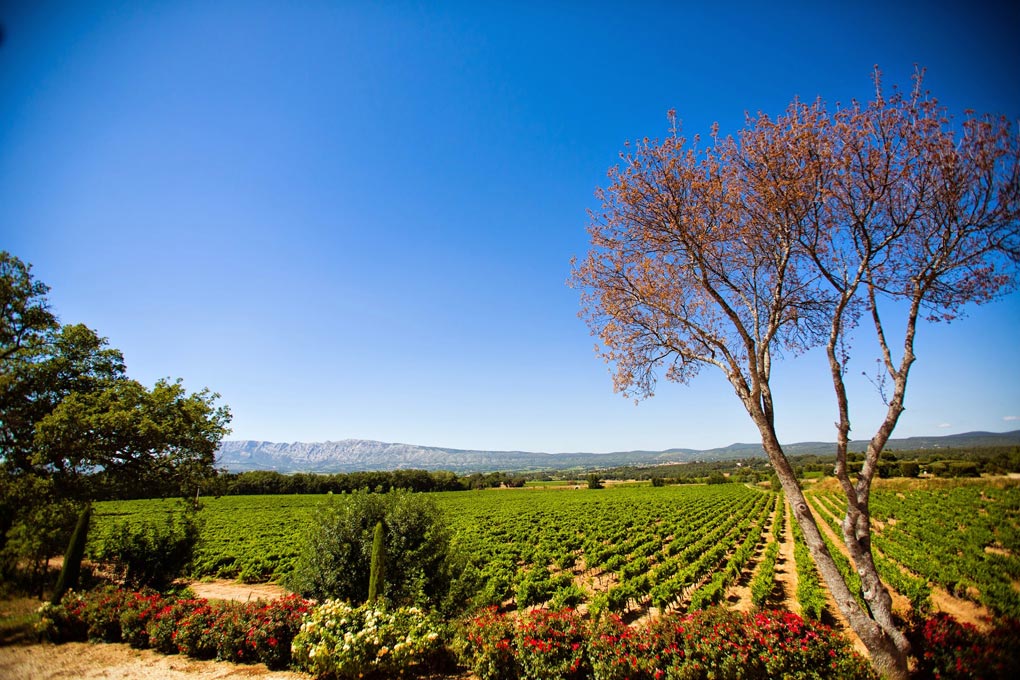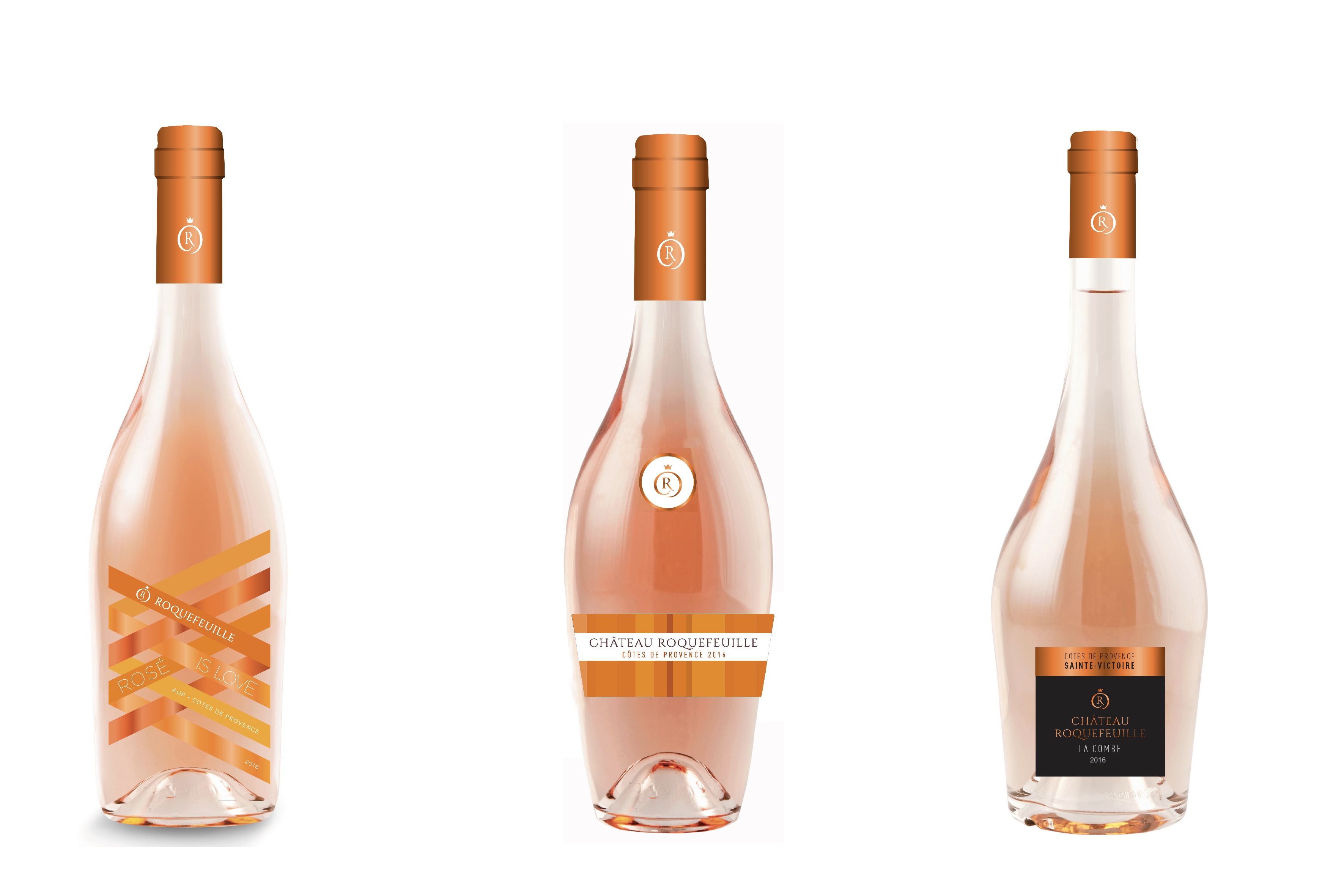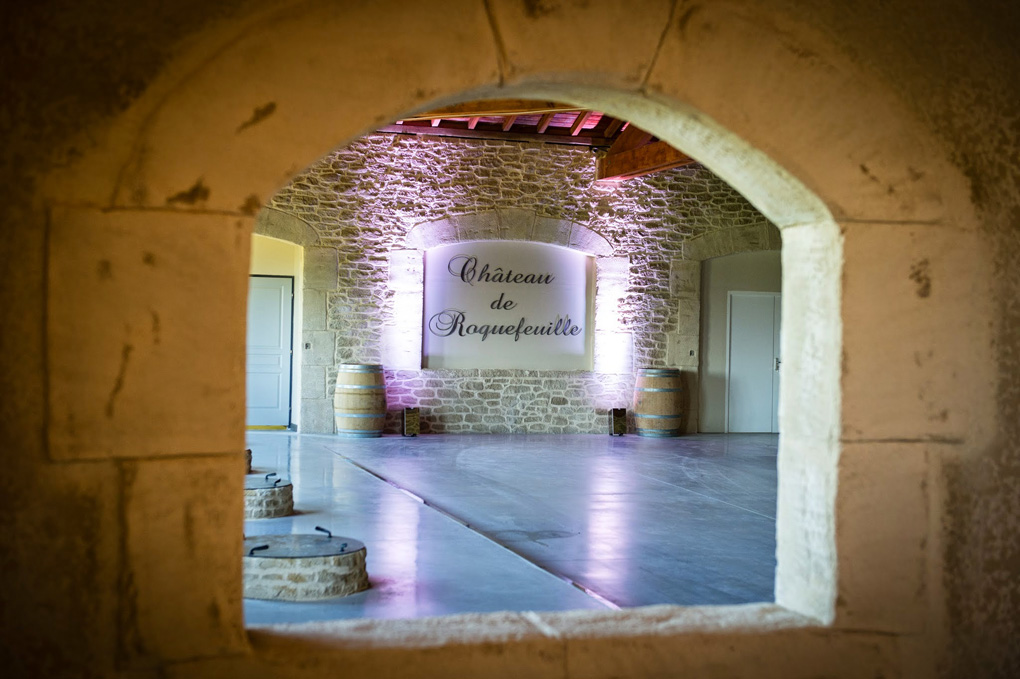
Château Roquefeuille is a Côtes de Provence wine estate with a prime location at the foot of the Aurélien mountains. Roman ruins, buried more than 150 feet underground, indicate that winemaking on the property goes back to the 11th century.
The vineyards at Chateau Roquefeuille are planted predominantly with Grenache and produce three beautiful pale, salmony pink rosés: two that are delicate and crisp and a third with a more complex, gastronomic style for food-pairing.
Since 2016, with the arrival of new owners dedicated to sustainable, ecologically-sound winemaking, all 250 acres are in the process of being converted to organic farming methods. Grape Collective sat down with winemaker Lea Rouyet to find out what makes her rosés stand out from the crowd.
Lisa Denning: Tell me a little bit about your background in winemaking. How did you get into wine?
Lea Rouyet: I’m from Biarritz, in the southwest of France and I studied agricultural engineering and did my first internship in the wine industry. I fell in love with the production of wine and decided to make it my career. I finished my studies and went to New Zealand to work one vintage and I came back to France and worked at an organic vineyard in the Languedoc first and afterwards I did some internships in Bordeaux. I arrived at Chateau Roquefeuille 2 years ago.
What does Roquefeuille mean in English?
Rocque is rock and feuille is leaf. We are at the foot of the mountains so there are a lot of rocks and all the vineyards are in the forest and have trees all around so there are lots of leaves. It’s 100 hectares of vineyards and 100 hectares of forest.
Winemaking has been going on there for a long time. We found the ruins of an old Roman villa in one plot at Roquefeuille so we are pretty sure there was winemaking during the Roman times. The villa is now 50 meters under the soil but maybe one day we will dig down and research it. Today there is a castle in the middle of the vineyard. The castle was built in the 17th Century and is now used for the winery. The old owner stopped producing wines and new owners bought the Château two years ago so 2016 is our first vintage.
Tell me a little bit about the terroir and the grapes that you grow.
 We're in the Valley of Sainte-Victoire, next to Aix-en-Provence, in front of Mont Sainte-Victoire and at the foot of the Aurelian mountains. We have a good terroir for rosé because we have a northern exposure which adds freshness and acidity to the wines. The soil is a mix of clay and limestone pebbles, along with sand caused by erosion from Mont Sainte-Victoire. Syrah, Grenache and Cinsault are the three main grape varieties, the majority being Grenache which is about 50% of the planted grapes. Grenache doesn't give a lot of color to the wine so that's the reason for our very clear colored wines.
We're in the Valley of Sainte-Victoire, next to Aix-en-Provence, in front of Mont Sainte-Victoire and at the foot of the Aurelian mountains. We have a good terroir for rosé because we have a northern exposure which adds freshness and acidity to the wines. The soil is a mix of clay and limestone pebbles, along with sand caused by erosion from Mont Sainte-Victoire. Syrah, Grenache and Cinsault are the three main grape varieties, the majority being Grenache which is about 50% of the planted grapes. Grenache doesn't give a lot of color to the wine so that's the reason for our very clear colored wines.
What you are doing with organics on the property?
When we arrived we started to change the methods of producing grapes and we plan to be an organic winery by 2021. At the moment we are in review by a French governmental organization. We have changed all the farming practises by using organic fertilizers and stopping herbicides. We work with organic produce and we’ve reduced the spraying. We are planting some ground cover to reduce erosion.
We are increasing the biodiversity which is one of the most important things that we want to do. Organic wine is very good but it’s necessary to increase the biodiversity too, especially when you have many hectares of vineyards, because it helps the vines to stay healthy while you're reducing the spraying.
Did the new owners plan to convert the winery to organics right from the beginning?
Yes, the company wanted to do it and, for me, it was very important because I believe in producing wine with a good environmental aspect to it and, for the customer, it’s a very important thing too.
With hundreds of Provençal Rosés flooding the market each Spring, what makes Chateau Roquefeuille’s rosés stand out?
First of all, it is the unique profile of Roquefeuille wines, with their clear color, freshness and structure. We make three different rosés for the US market. 'Rosé In The Air' is our lightest style,a very fresh wine. It's the perfect wine to drink on the terrace with friends. 'R de Roquefeuille' is a darker colored wine with more complexity and a lot more aromas — peaches and pears, but also clementines. On the mouth it's full with a good acidity and the taste stays in your mouth for a long time. The third wine is the 'La Combe Rosé' a gastronomic wine in which we let the juice sit on the skins three hours longer than the other two. The grapes come from old plots of Grenache planted in 1956. This rosé has the most complexity and can easily pair with a full meal.
You could taste all three blind amongst the competition and you will not be disappointed by our wines.
The original packaging also stands out from our colleagues’ rosés with its tango color and stylish type of bottles. They are available in large formats (magnum and 3 liters), ideal for parties.
What is one of the most challenging things about being a winemaker?
Viticulture depends enormously on weather factors, which is what makes the beauty of the wine, with exceptional vintages. My challenge as a winemaker is to maintain an excellent grape quality during these sometimes difficult years. For that, it is essential to know perfectly the soil and to know how to develop it to select the best parcels according to the years. Indeed, the plots that require the most attention will not be the same if it is an extremely dry year (like 2017) or a wetter year (like 2018).
What is the most rewarding thing about being a winemaker?
Producing a good wine is the work of a whole year, between pruning, disbudding and maintaining a good state of health in the vineyards but also determining the optimal date of harvest. Once the grapes arrive in the cellar, the vinification brings to light all the aromatic complexity and quality of the grapes that were produced during the vintage. I would say that the best reward is when the first grapes arrive in the cellar; when we see the results of a whole year's work in our vineyards. Of course, the second reward is when you taste your wine and receive praise for its quality and complexity.
What do you like to drink when you're not drinking your own wine?
I have always had a preference for wines from the south of France, wines often based on Grenache, this is a grape variety that brings a lot of roundness and volume in the mouth that I appreciate. It is a grape variety that fascinates me because it grows in very dry areas, on only a few centimeters of soil. For example, I appreciate the wines from Côtes du Rhône such as Châteauneuf-du-Pape, the wines from Languedoc and more precisely the appellation Pic Saint Loup and of course, the wines from Provence!
Does Chateau Roquefeuille accept visitors to the estate?
Yes, it’s a beautiful place and we love to have visitors.
Read more from Lisa Denning on Grape Collective and The Wine Chef.










